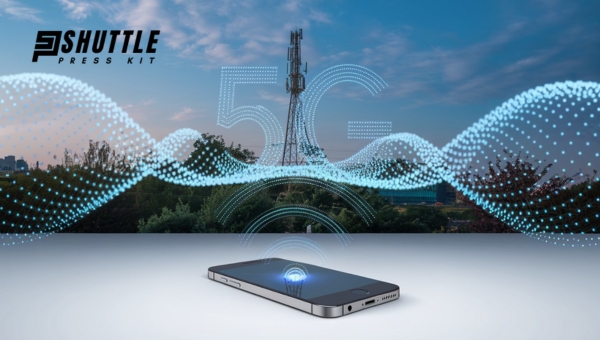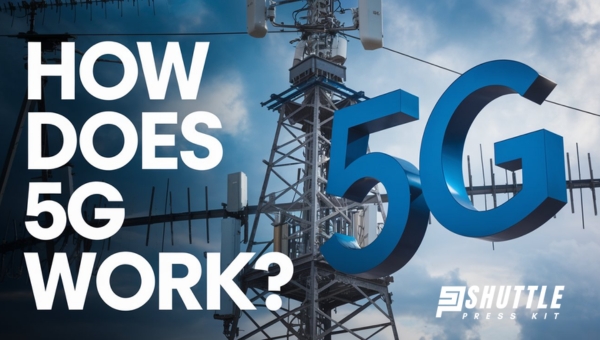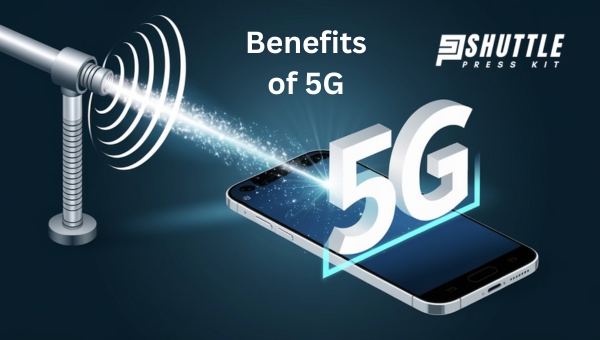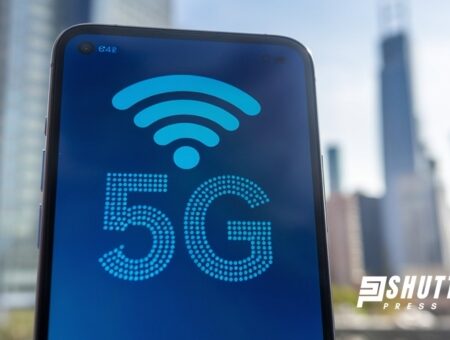Have you ever wondered, *what is 5G* and how it will change our lives? Imagine a world where your internet is super-fast, your smart devices talk to each other instantly, and self-driving cars navigate better than ever. Sounds almost futuristic, doesn’t it? Well, that future is here with 5G!
In this post, I’ll break down what 5G really is and why everyone is excited about it. Let’s explore how this new technology can revolutionize everything from our phones to our cities. Don’t miss out; the future of connectivity and innovation awaits!
What Is 5G?
5G represents the fifth generation of mobile network technology, following 4G LTE. It was designed to significantly enhance the speed, responsiveness, and reach of wireless networks. 5G networks aim to provide data rates up to 10 Gbps, which is more than ten times faster than the top speeds of 4G.

Unlike previous generations, 5G uses a mix of frequency bands, from low-band frequencies that travel long distances to high-band millimeter waves that provide ultra-high speeds over shorter distances. This spectrum flexibility is crucial for supporting a diverse range of applications, from driving immersive virtual reality to enabling complex industrial automation.
How Does 5G Work?
5G operates through advanced technologies to deliver faster speeds, reduced latency, and greater connectivity. It uses a combination of low, mid, and high-band frequencies. Low-band frequencies offer broad coverage and can penetrate buildings.

Mid-band provides a balance between speed and coverage. High-band, also known as millimeter wave (mmWave), offers ultra-fast speeds over short distances.
Key Technologies:
- Small Cells: These are low-power base stations that enhance network capacity and coverage, particularly in densely populated areas. They ensure efficient data handling close to the user.
- Massive MIMO: Multiple-input multiple-output (MIMO) technology uses many antennas at the base station to handle more simultaneous data streams, boosting capacity and efficiency.
- Beamforming: This technique directs signals to specific users rather than spreading them in all directions. It improves signal quality and reduces interference.
- Network Slicing: It allows operators to create virtual networks tailored to specific applications or services, ensuring critical services get priority.
- Edge Computing: Placing data processing closer to the data source reduces latency and speeds up processing times. It’s vital for applications needing real-time responses, like autonomous vehicles.
- Frequency Bands Usage: 5G uses a spectrum ranging from sub-1 GHz to mmWave. Low and mid-band frequencies cater to rural and urban environments, respectively, while high-band frequencies target densely packed urban hotspots.
- Latency Reduction: 5G networks achieve low latency, crucial for real-time applications, by optimizing the air interface and backhaul networks.
- Device Density: 5G efficiently manages up to 1 million devices per square mile using advanced signal processing and multiple channels. This capability is essential for IoT.
5G infrastructure includes upgrading existing cell towers with new equipment and deploying small cells for dense urban coverage. Backhaul improvements, such as fiber-optic connections, support the increased data load.
Understanding these core components of 5G reveals how it transforms connectivity, meeting the demands of modern devices and applications.
Benefits of 5G
5G technology offers numerous benefits that revolutionize connectivity and interaction.

Faster Speeds
5G delivers dramatically faster speeds, reaching up to 10 Gbps. This speed enhancement allows quick downloads and seamless streaming. For example, an HD movie can be downloaded in seconds.
Lower Latency
Latency in 5G networks can be reduced to as low as one millisecond. This minimal delay is essential for real-time applications like autonomous driving and remote surgery, where instantaneous communication is crucial.
Massive Connections
5G supports up to one million devices per square mile. This connectivity boost enables expansive IoT ecosystems, where numerous devices—such as smart appliances and sensors—communicate and share data efficiently.
Efficient Coverage
5G enhances coverage with a combination of low, mid, and high-band frequencies. Small cells improve network performance in densely populated areas. Massive MIMO technology efficiently manages increased data traffic, ensuring stable connections.
Precise Positioning
5G’s high frequency and dense deployment enable precise positioning capabilities. This feature benefits applications like augmented reality (AR), where accurate location tracking enhances user experiences.
5G vs. 4G: Key Differences
5G technology stands apart from 4G not just in speed but in capacity, latency, and network architecture. Here’s a detailed comparison:
| Feature | 5G | 4G |
|---|---|---|
| Speed | Up to 10 Gbps | Up to 1 Gbps |
| Latency | As low as 1 ms | Around 30-50 ms |
| Bandwidth | Higher bandwidth | Limited bandwidth |
| Frequency Bands | Uses higher frequency bands (up to 100 GHz) | Uses lower frequency bands (up to 6 GHz) |
| Connectivity | Can handle more devices concurrently | Limited device connectivity |
| Energy Efficiency | More energy-efficient | Less energy-efficient |
| Network Slicing | Supported | Not supported |
| Architecture | Uses a combination of cellular and millimeter waves | Primarily uses cellular waves |
| Coverage | Initially limited, expanding gradually | Broad coverage |
| Backward Compatibility | Compatible with 4G networks | Not compatible with 5G networks |
| Data Efficiency | Enhanced data encoding methods | Standard data encoding methods |
By understanding these key differences, it’s clear that 5G is set to revolutionize how devices connect, interact, and transform daily life.
5G Use Cases
5G’s transformative capabilities extend beyond speed, offering a wide range of real-world applications. These use cases demonstrate how 5G revolutionizes various sectors.
Smart Cities
Incorporating 5G, smart cities enhance traffic management, energy efficiency, and public safety. For instance, smart traffic lights reduce congestion by dynamically adjusting signal timings. Surveillance systems with real-time data analysis improve emergency response.
Healthcare
The healthcare industry benefits significantly from 5G, especially through remote surgery and telemedicine. Surgeons can perform intricate procedures from different locations with millisecond latency, ensuring precision. Telemedicine services provide real-time consultations, expanding healthcare access to remote areas.
Autonomous Vehicles
5G facilitates the development and deployment of autonomous vehicles by providing reliable, low-latency communication. These vehicles use real-time data to make split-second decisions, improving safety and efficiency on the roads.
Industrial Automation
In manufacturing, 5G supports industrial automation and smart factories. Robots and machinery operated through 5G networks perform tasks more efficiently, reducing human error. Predictive maintenance powered by 5G-driven IoT devices minimizes downtime and prolongs equipment lifespan.
Augmented Reality (AR) and Virtual Reality (VR)
5G enhances AR and VR experiences by offering high bandwidth and low latency. In education, students engage in immersive learning environments. E-commerce platforms allow customers to virtually try products before purchasing.
- Entertainment: The entertainment industry experiences a significant boost with 5G. Streaming high-definition content becomes seamless, with minimal buffering. Live events, including sports and concerts, offer enhanced viewing experiences with multiple camera angles and interactive features.
- Agriculture: Smart farming leverages 5G for precision agriculture. IoT sensors monitor soil conditions, moisture levels, and crop health in real time. This data helps farmers make informed decisions, improving yield and resource management.
- Public Safety: Emergency services utilize 5G for faster communication and data sharing. Drones equipped with 5G provide real-time video feeds during disasters, aiding in rescue operations. Wearable devices for first responders monitor health metrics and location, ensuring their safety.
- Retail: Retailers use 5G to enhance the shopping experience through advanced analytics and personalized marketing. Smart shelves notify staff when restocking is needed. In-store navigation apps guide customers to products, improving efficiency.
By harnessing the power of 5G, these sectors can significantly improve efficiency, safety, and user experience.
Impact on Various Sectors
Healthcare
5G revolutionizes healthcare, offering possibilities like remote surgery and telemedicine. Surgeons can perform operations remotely with minimal latency, allowing for real-time precision.
Patients in rural areas access specialist consultations without traveling, improving healthcare accessibility. Wearable devices send data instantly to healthcare providers, enabling continuous monitoring and quicker response times.
Transportation
5G transforms transportation, enhancing autonomous vehicles and smart traffic systems. Self-driving cars communicate in real-time with traffic signals and other vehicles, reducing accidents and improving traffic flow.
Public transportation systems benefit from efficient route management and real-time updates for passengers. Drones used for delivery integrate with 5G networks for precise navigation and quick package delivery.
Industrial Automation
In industrial automation, 5G enables smart factories and predictive maintenance. Factories utilize real-time data to optimize production and reduce downtime.
Machinery equipped with sensors sends performance data instantly, identifying issues before they become problems. This reduces maintenance costs and improves operational efficiency.
Agriculture
5G’s impact on agriculture includes precision farming techniques that enhance crop yield and resource management.
Farmers use IoT sensors to monitor soil conditions, weather patterns, and crop health in real time, making informed decisions. Automated machinery driven by 5G performs tasks like planting and harvesting with high efficiency, increasing productivity.
Entertainment
The entertainment sector benefits from 5G with seamless streaming and immersive experiences. VR and AR applications deliver high-quality experiences without lag, enriching gaming and virtual tours.
5G supports ultra-high-definition (UHD) video streaming, ensuring uninterrupted viewing experiences. Live events broadcast in real-time reach global audiences without delays.
Education
5G enhances education through improved e-learning platforms and virtual classrooms. Students in remote locations access high-quality education without connectivity issues.
AR and VR technologies create interactive learning experiences, making complex concepts easier to understand. Teachers conduct real-time, engaging lessons irrespective of geographical constraints.
Retail
In retail, 5G supports enhanced shopping experiences with AR and VR. Customers try products virtually before purchase, increasing satisfaction and reducing returns.
Inventory management systems operate in real time, optimizing stock levels and reducing shortages. Mobile payment systems benefit from faster transactions, improving checkout efficiency.
Public Safety
5G significantly boosts public safety by enhancing emergency response systems. First responders access real-time information, allowing for rapid decision-making.
Surveillance systems with 5G connectivity offer high-definition video feeds, improving situational awareness. Smart city infrastructures, including connected streetlights and traffic signals, create safer urban environments.
The integration of 5G across these sectors highlights its transformative potential, enhancing efficiency, safety, and user experiences. With rapid advancements and widespread adoption, 5G stands to revolutionize multiple industries and improve how we live and work.
Challenges and Concerns
5G technology, despite its numerous benefits, also brings specific challenges and concerns. Security issues are a major topic of discussion, as the increased connectivity of 5G networks opens more potential entry points for cyberattacks. With 5G supporting critical infrastructure and private data, ensuring robust cybersecurity measures is essential.
Privacy remains a significant concern. The extensive data collected and transmitted by 5G networks can lead to potential misuse or unauthorized access to personal information. Strict data protection regulations and effective privacy policies are necessary to safeguard users.
Health implications often arise in discussions about 5G. Some worry about increased exposure to electromagnetic fields (EMFs). The World Health Organization (WHO) mentions that EMF levels produced by 5G technology are within the safe limits, but continuous monitoring and research are crucial.
Infrastructure deployment poses practical challenges. The large number of small cells required for 5G networks demands substantial investment and can lead to aesthetic and logistical issues in urban areas.
These challenges highlight the need for a comprehensive approach to 5G implementation, balancing technological advancements with security, privacy, health, infrastructure, regulatory, and energy considerations.
Conclusion
5G is set to revolutionize the way we interact with technology and each other. Its potential to create an interconnected world is immense, offering benefits that extend far beyond faster internet speeds. From enhancing smart cities to transforming healthcare and transportation, the impact of 5G will be felt across numerous sectors.
However, the deployment of 5G comes with its own set of challenges, including security, privacy, and infrastructure concerns. Addressing these issues is crucial to fully realizing the benefits of this groundbreaking technology.
As we move forward, it’s essential to balance innovation with responsibility, ensuring that 5G’s implementation is both effective and equitable. The future with 5G holds exciting possibilities, and I’m eager to see how it will shape our world.
Frequently Asked Questions
What is 5G technology?
5G is the fifth generation of mobile network technology, offering significantly faster internet speeds, lower latency, and the ability to connect a massive number of devices simultaneously.
How is 5G different from 4G?
5G offers data rates up to 10 Gbps, dramatically reduces latency to as low as 1 millisecond, and can support up to 1 million devices per square mile, far surpassing 4G capabilities.
What are the main benefits of 5G?
5G provides ultra-fast internet speeds, low latency for real-time applications, and supports extensive IoT ecosystems due to its ability to connect many devices simultaneously.
How will 5G improve everyday activities?
5G enhances daily activities by enabling quick movie downloads, seamless streaming, minimal lag during video calls, and better real-time applications like AR and VR experiences.
What impact will 5G have on healthcare?
5G will revolutionize healthcare by supporting remote surgeries, improving telemedicine, and enabling real-time monitoring through wearable devices and sensors.
What role will 5G play in smart cities?
5G will support smart city infrastructure by enabling efficient traffic management, enhancing public safety systems, and facilitating seamless communication between various smart devices.
Why is 5G important for autonomous vehicles?
5G’s low latency and high reliability are crucial for the real-time communication required for autonomous vehicles, improving their safety and efficiency.
How does 5G support the Internet of Things (IoT)?
5G can connect up to 1 million devices per square mile, making it essential for supporting expansive IoT ecosystems where numerous devices need to communicate simultaneously.
What are some challenges with 5G deployment?
Challenges include security issues, privacy concerns, health implications, infrastructure deployment, regulatory hurdles, energy consumption, and ensuring equitable access.
Are there any health risks associated with 5G?
Current research by the WHO indicates that 5G technology emits radiation levels within safe limits but recommends ongoing monitoring to ensure public health safety.
The Importance of 5G Technology in Modern Communications
5G technology represents a monumental leap in wireless communication, outpacing its predecessors by delivering significantly higher data speeds, lower latency, and the capacity to connect a vast array of devices simultaneously.
This advancement is not just about faster internet speeds for smartphones; it’s poised to revolutionize industries and facilitate innovations that were previously confined to the realm of science fiction.
One of the most compelling reasons why 5G matters is its potential to transform how we live and work. With its ultra-reliable low latency communication (URLLC), 5G can support critical applications that demand real-time responses, such as autonomous vehicles, remote surgery, and advanced virtual reality experiences. These applications require instantaneous reaction times and high levels of data exchange accuracy that only 5G can provide. Furthermore, the massive machine type communications (mMTC) aspect of 5G opens new horizons for smart cities and Internet of Things (IoT) ecosystems. It lays the foundation for intelligent management systems capable of monitoring and controlling infrastructure like traffic lights, water supplies, and power grids with unprecedented efficiency.
Also Read: Starlink Offer Phone Service? Discover Now!
Understanding the Mechanics Behind 5G Technology
5G technology signifies a monumental leap in wireless communication, primarily through its innovative use of radio frequencies. Unlike its predecessors, 5G taps into the millimeter wave spectrum—frequencies that were previously relegated to the realms of satellite and radar systems. This fresh spectrum territory contributes significantly to 5G’s hallmark high-speed and low-latency capabilities. By harnessing these higher frequency bands, which occupy spaces that prior cellular generations could not access, 5G can transmit data at unprecedented rates, opening up new avenues for technological applications and connectivity.
To reinforce coverage and ensure robust network reliability, especially in densely populated urban areas, 5G also introduces the deployment of small cells—compact yet powerful base stations equipped with massive MIMO technology. These small cells act as localized beacons of connectivity, each boasting an array of antennas that work together to amplify signal strength while minimizing cross-traffic interference. This aspect of 5G’s infrastructure is akin to having personalized wireless routers scattered throughout neighborhoods, greatly enhancing the quality of service for end-users by guaranteeing stronger signal fidelity and enabling a multitude of devices to coexist on the same network without compromising performance.
Availability of 5G Networks Across Locations
As the next-generation wireless technology, 5G is expanding its footprint across the United States, bringing faster speeds and more reliable mobile network services to a wide range of areas. The availability of 5G is predominantly found in major cities where users can enjoy the fastest levels of connectivity. However, this advanced network has also made its way into many rural regions and smaller towns, providing a significant upgrade from previous generation networks. The rollout of 5G is being spearheaded by three main carriers: Verizon, AT&T, and T-Mobile. To determine if you’re within a 5G service area, prospective users should consult individual coverage maps provided by these carriers.
T-Mobile stands out with the largest and quickest 5G deployment in the country, covering an impressive number of over 325 million Americans. Their ambitious plans include expanding their Ultra Capacity 5G Network even further by the end of the current year. In comparison, Verizon and AT&T are also diligently working on extending their own nationwide 5G networks but don’t yet match T-Mobile’s widespread coverage or speed capabilities in all areas. Particularly outside urban environments, users may find that high-speed (millimeter wave) 5G service remains elusive with lower-bandwidth options or reliance on existing LTE services as temporary solutions until broader rollouts occur.
Availability of 5G Connectivity in Rural Regions
The deployment of 5G technology has indeed made its way into rural communities across the United States, transforming connectivity landscapes that have long been underserved by previous generations of cellular technology. While the rollout encompasses a wide breadth of areas, it is essential to note that the ultra-fast speeds associated with 5G’s highest tier, particularly millimeter-wave bands, remain concentrated in more densely populated urban centers. However, rural areas are increasingly gaining access to lower-band and mid-band 5G services. These advancements are crucial for facilitating improved internet speeds and reliability in regions where digital access has traditionally lagged behind urban counterparts.
Despite the progressive spread of 5G networks into less populated locales, certain challenges persist. Geographic and topographical elements inherent to regions such as the Mountain West continue to pose barriers to uniform coverage distribution, especially for the highest speed offerings. Nevertheless, even with these limitations, the advent of 5G brings a significant upgrade over previous network generations. Notably, specific sectors within these rural settings—like healthcare facilities, manufacturing plants, and agricultural operations—are beginning to experience deployments of faster millimeter-wave technology.
Also Read: Starlink Volcano Mount Guide: Easy DIY Installation Tips
What is 5G?
5G is the fifth generation of wireless technology, providing faster speeds and more reliable internet connections on phones and other devices than previous generations.
How does 5G differ from 4G?
5G offers significantly higher speeds, lower latency, and the ability to connect many more devices at once, improving overall network efficiency and performance.
Can 5G replace home broadband?
Yes, in some areas, 5G is fast and reliable enough to replace traditional home broadband connections, offering an alternative with potentially faster speeds and simpler installation.
Is 5G available everywhere?
As of now, 5G is progressively being rolled out across the world, but its availability is still limited to certain regions and urban areas, with ongoing expansion plans.
Also Read: Amazon’s Project Kuiper vs Starlink: Showdown Unpacked
Conclusion
The deployment and evolution of 5G technology mark a pivotal shift in the telecommunication landscape, promising to redefine the way we interact with the digital world. With unprecedented speeds, lower latency, and the capability to connect a vast number of devices simultaneously, 5G is set to unlock a new realm of possibilities across various sectors including healthcare, autonomous vehicles, smart cities, and IoT. However, the successful adoption of 5G technology hinges on overcoming challenges related to infrastructure, security, and accessibility.
As we stride into this new era of connectivity, it is imperative for stakeholders across industries to collaborate and innovate, ensuring that the benefits of 5G can be universally accessed and fully realized. The journey towards a fully connected future is indeed underway, heralded by the transformative potential of 5G.
